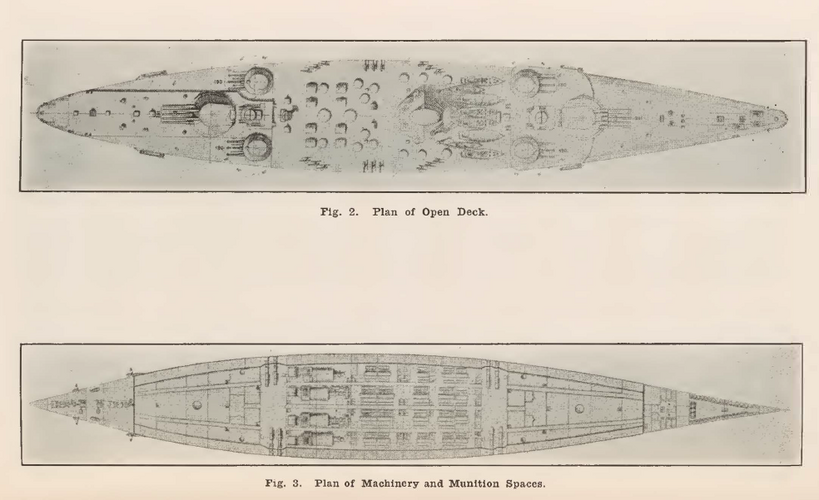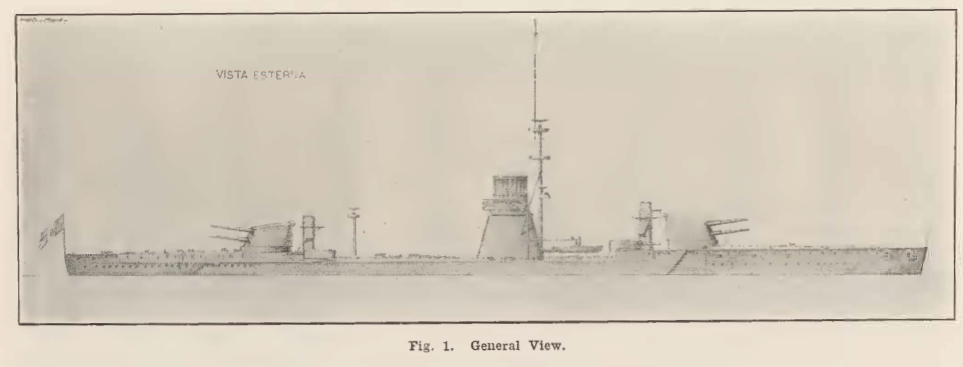Perhaps some of you still remember the article in stefsep's blog, where he mentioned a weird Italian battleship design:

 stefsap.wordpress.com
I just found out the original paper, published in 1916, and maybe written in 1915: (pp.196-223)
stefsap.wordpress.com
I just found out the original paper, published in 1916, and maybe written in 1915: (pp.196-223)
The author, Col. E. Ferretti (A misspelling of "Edgardo Ferrati"?) gave a detailed description of his "Ideal Battleship", after the summary and prospect of the navies at that time.
It's interesting at the end of the article that when Admiral Kondo (probably Motoki Kondo) questioned the munition supplying issue of the quint-mount, Ferretti simply answered "I think no serious difficulty is to be expected".
Specification:
Displacement: 32000t
Armament: 2xV 381 mm/45, 4xIII 190 mm/50, 28xI 102 mm (18x HA + 10x LA), 8x 533 mm TT
Armor: Belt - 300 mm-150 mm inclined (Resist 400 mm shells), Deck - Unknown, Underwater protections.
Propulsion: 4x Turbines (10x coal/oil boilers + 10x oil only boilers), 26-28 kt


Ferretti’s 10/381 in quintuples battleship design
Unfortunately there is not so much known about this design. The original drawing comes from”Warships of the first line of battle” in the “Transactions of the International Enginee…
It's interesting at the end of the article that when Admiral Kondo (probably Motoki Kondo) questioned the munition supplying issue of the quint-mount, Ferretti simply answered "I think no serious difficulty is to be expected".
Specification:
Displacement: 32000t
Armament: 2xV 381 mm/45, 4xIII 190 mm/50, 28xI 102 mm (18x HA + 10x LA), 8x 533 mm TT
Armor: Belt - 300 mm-150 mm inclined (Resist 400 mm shells), Deck - Unknown, Underwater protections.
Propulsion: 4x Turbines (10x coal/oil boilers + 10x oil only boilers), 26-28 kt


Last edited:




